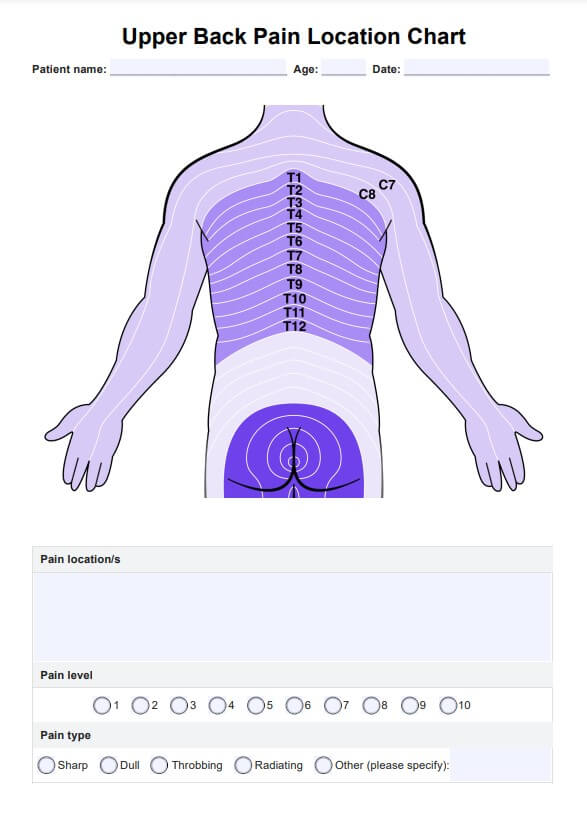You can identify your back pain by analyzing the location, type of pain and any accompanying symptoms. The type of pain can range from a dull ache to sharp and stabbing. Other symptoms such as tingling, numbness, or weakness in the legs may indicate nerve involvement. Consult a doctor for a proper diagnosis and treatment plan.

Upper Back Pain Location Chart
Better understand and diagnose your patient’s condition with an Upper Back Pain Location Chart. Click here for more information and a template copy.
Upper Back Pain Location Chart Template
Commonly asked questions
Organ-related back pain is usually characterized by a constant, dull ache in the upper or lower back. It can also be accompanied by other symptoms such as fever, nausea, and vomiting. If you are experiencing these symptoms in addition to your back pain, it is important to see a doctor for proper evaluation and treatment.
Muscular back pain is often caused by strain or injury to the back muscles and can be identified by a sharp or throbbing pain that worsens with movement. It may also be accompanied by stiffness and soreness in the affected area.
EHR and practice management software
Get started for free
*No credit card required
Free
$0/usd
Unlimited clients
Telehealth
1GB of storage
Client portal text
Automated billing and online payments











